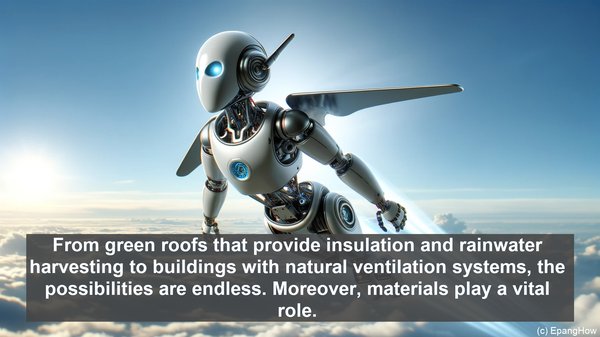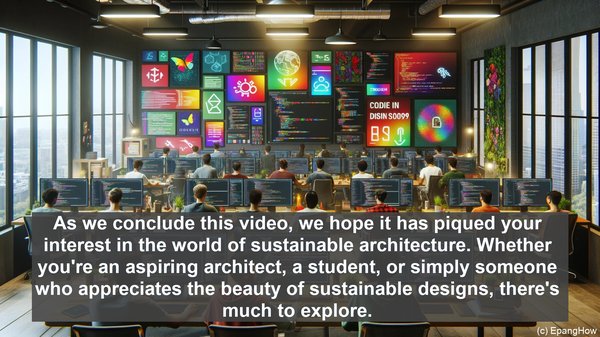Introduction: Unveiling the World of Sustainable Architecture
Welcome to this exciting article on sustainable architecture. In today’s world, where environmental concerns are paramount, sustainable architecture has emerged as a crucial field. It’s not just about constructing buildings; it’s about creating spaces that harmonize with nature, conserve resources, and promote well-being. And in our quest to explore this domain, we have an extraordinary guide by our side – ChatGPT, an AI-powered assistant that can provide us with insights, examples, and even answer our questions. So, let’s embark on this journey together!

The Pillars of Sustainable Architecture
Sustainable architecture rests on three fundamental pillars: environmental, social, and economic sustainability. Environmental sustainability involves reducing a building’s carbon footprint, optimizing energy usage, and utilizing renewable resources. Social sustainability focuses on creating inclusive spaces that cater to diverse needs and foster a sense of community. Lastly, economic sustainability emphasizes long-term cost-effectiveness, where investments in sustainable features yield substantial returns over time.
Innovative Designs: Merging Aesthetics and Sustainability
Gone are the days when sustainable buildings were synonymous with dull, box-like structures. Today, architects are pushing boundaries, creating visually stunning designs that are also eco-friendly. From green roofs that provide insulation and rainwater harvesting to buildings with natural ventilation systems, the possibilities are endless. Moreover, materials play a vital role. With advancements in technology, we now have options like recycled steel, bamboo, and even bioplastics, reducing our reliance on traditional resource-intensive materials.

The Role of AI in Sustainable Architecture
This is where ChatGPT, our AI guide, truly shines. With its vast knowledge base, it can assist architects in various ways. For instance, during the design phase, it can analyze factors like solar orientation, wind patterns, and suggest optimal layouts. It can also simulate energy usage, helping architects make informed decisions. And as the field evolves, ChatGPT can continuously learn, staying up-to-date with the latest trends, materials, and regulations.
The Future: Sustainable Architecture’s Promising Horizon
As we look ahead, sustainable architecture’s importance is only set to grow. With urbanization on the rise, the need for energy-efficient, livable spaces is paramount. Additionally, factors like climate change and resource scarcity further underscore the significance of sustainable practices. However, it’s not just about new constructions. Retrofitting existing buildings, adopting green technologies, and fostering a culture of sustainability are equally vital. And in this journey, ChatGPT, our AI guide, will continue to be an invaluable resource, aiding architects, students, and enthusiasts alike.
